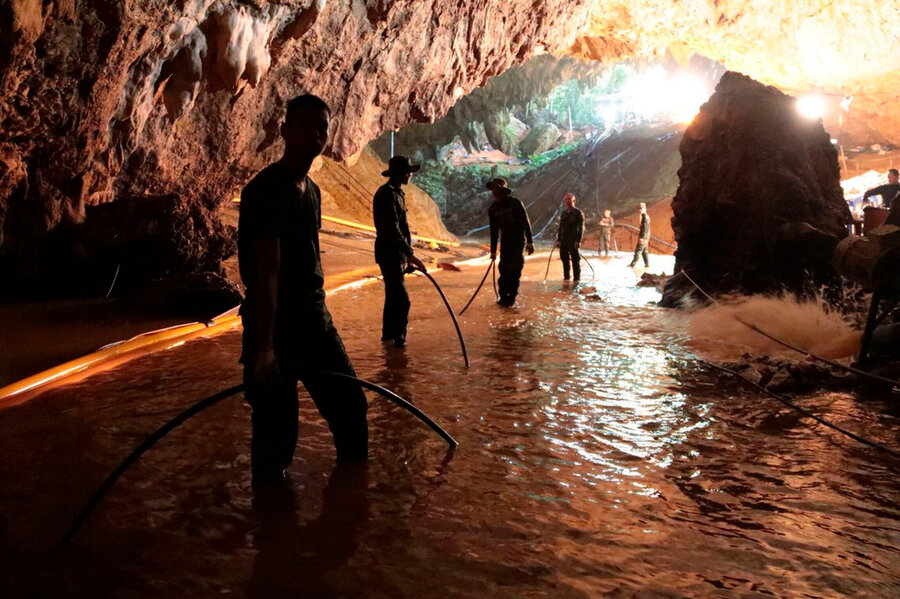Thai cave rescue: a metaphor on climate adaptation
If ever there were a global example of resilience in the face of a weather disaster, it would be the image of 12 boys and their soccer coach trapped for days by flood waters in a Thai cave. They adapted to the dark isolation, showed patience for the rescue effort, and perhaps most of all, bonded even closer to endure a climate event.
They also learned, in hindsight, not to ignore warnings about weather risks, such as the sign outside the cave about seasonal flooding.
Just as exemplary has been the empathy shown for their plight as well as the hope expressed for their rescue. The intense media attention has put a spotlight on how innovative solutions – some local, some global – are necessary to help people recover from a weather calamity – and also prepare for one.
Perhaps this major news event can provide lessons in how resiliency and community bonding are necessary to deal with the predicted effects of climate change, such as rising seas, severe storms, and extreme temperature shifts. Material solutions such as sea walls, underground electric grids, and drought-resistant farming are not enough. The first task in climate adaptation is to overcome fatalism by creating community ties to build endurance and find solutions.
Under the 2015 Paris agreement on climate change, most countries agreed to set goals for their efforts to adapt to climate impacts. In addition, wealthier nations pledged to raise $100 billion a year by 2020 to finance the adaptation plans of developing nations.
The results of these pledges are mixed.
Many countries and local communities, especially those most vulnerable to climate change, have designed plans and begun to invest in adaptation. A good example is the tiny Caribbean nation of Dominica, which was hit hard by hurricane Maria last year. It has mobilized local people and foreign financiers in an attempt to become the world’s first “fully climate-resilient” nation. Entire towns are being relocated from coastlines, for example, in the hope of using the disaster to transform the island.
At the international level, however, the Green Climate Fund that opened in 2013 to help poor nations deal with climate change has suffered from a shortage of promised funds and an internal debate over which projects to support. Last week, its executive director abruptly stepped down, a reflection of its troubles.
Still, the “age of adaptation” may already be well under way. Just as the world united in hopes of rescuing the Thai boys from a sudden flood, it might also better unite in protecting countries from other weather risks.





